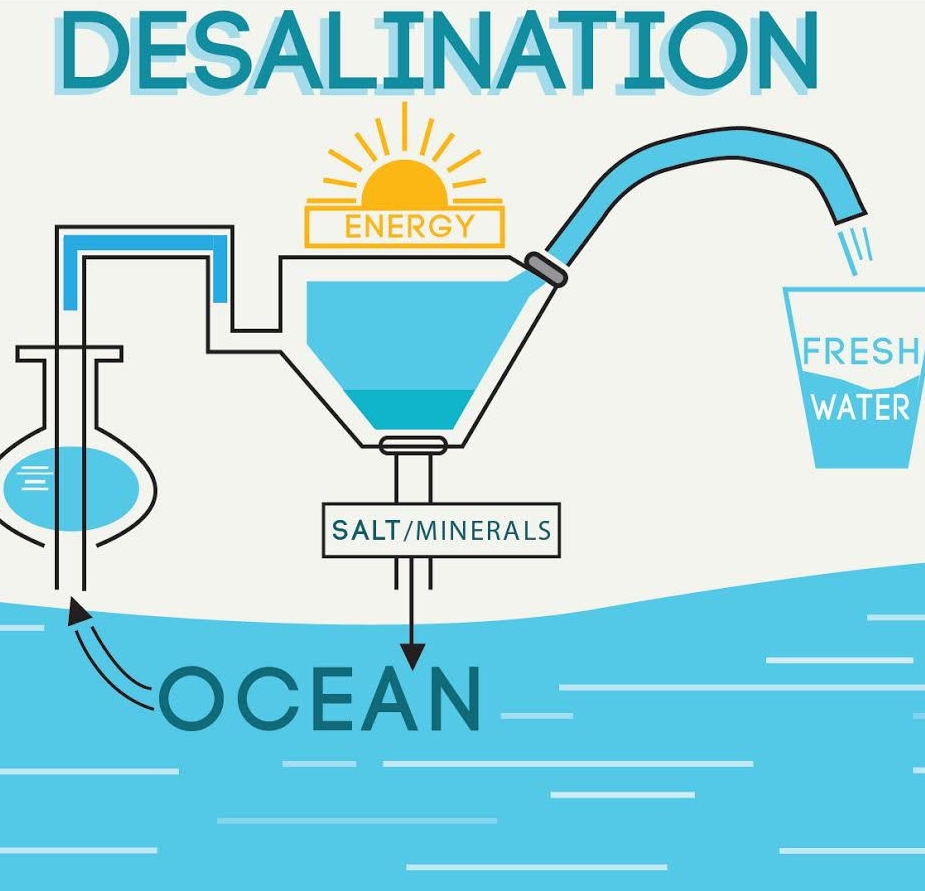Desalination
 Desalination is a process that takes away mineral components from saline water. More generally, desalination refers to the removal of salts and minerals from a target substance, as in soil desalination, which is an issue for agriculture.
Desalination is a process that takes away mineral components from saline water. More generally, desalination refers to the removal of salts and minerals from a target substance, as in soil desalination, which is an issue for agriculture.
Saltwater is desalinated to produce water suitable for human consumption or irrigation. One by-product of desalination is salt. Most of the modern interest in desalination is focused on cost-effective provision of fresh water for human use.
Due to its energy consumption, desalinating sea water is generally more costly than fresh water from rivers or groundwater, water recycling and water conservation. However, these alternatives are not always available, and depletion of reserves is a critical problem worldwide.
Desalination processes are usually either driven by either thermal (e.g. distillation) or electrical (e.g., photovoltaic or wind power) as the primary energy types.
Currently, approximately 1% of the world's population is dependent on desalinated water to meet daily needs, but the UN expects that 14% of the world's population will encounter water scarcity by 2025.
There are several methods. Each has advantages and disadvantages, but all are useful.
Methods:
o Solar distillation
o Vacuum distillation
o Multi-stage flash distillation
o Multiple-effect distillation
o Vapor-compression distillation
o Reverse osmosis
o Freeze-thaw
o Electrodialysis reversal
o Membrane distillation
o Wave-powered desalination
